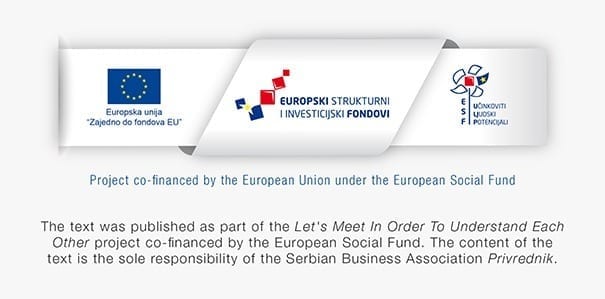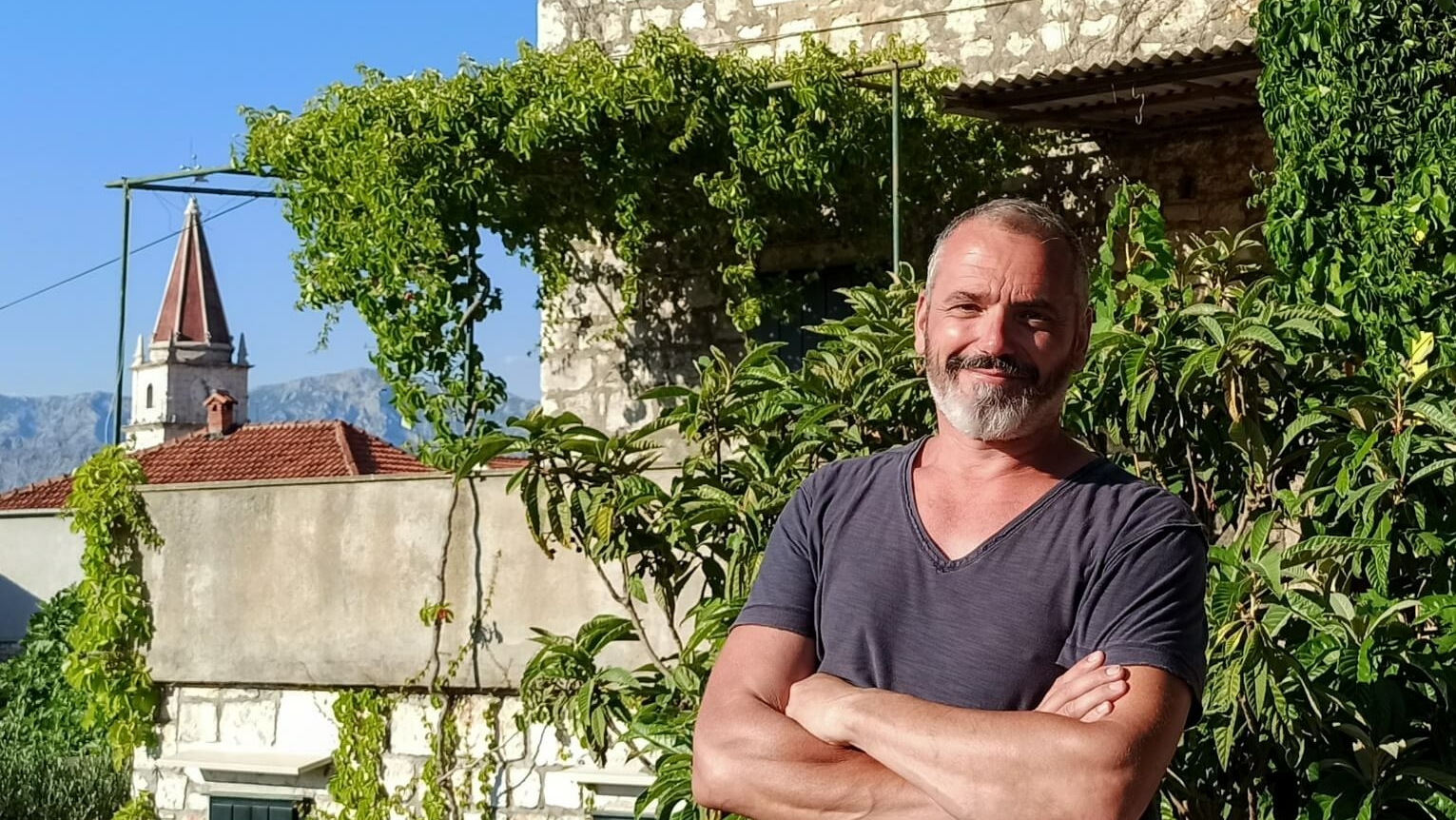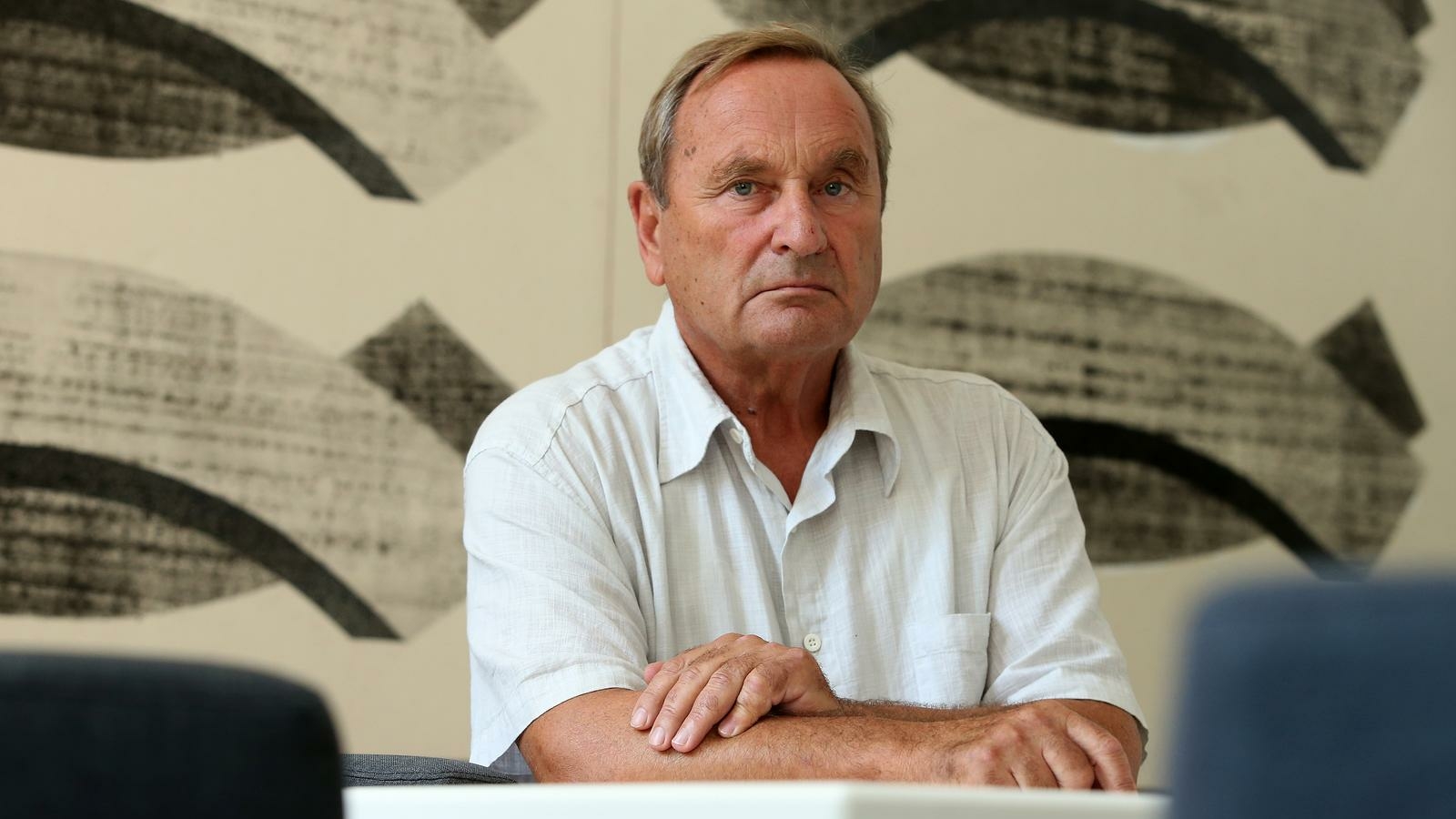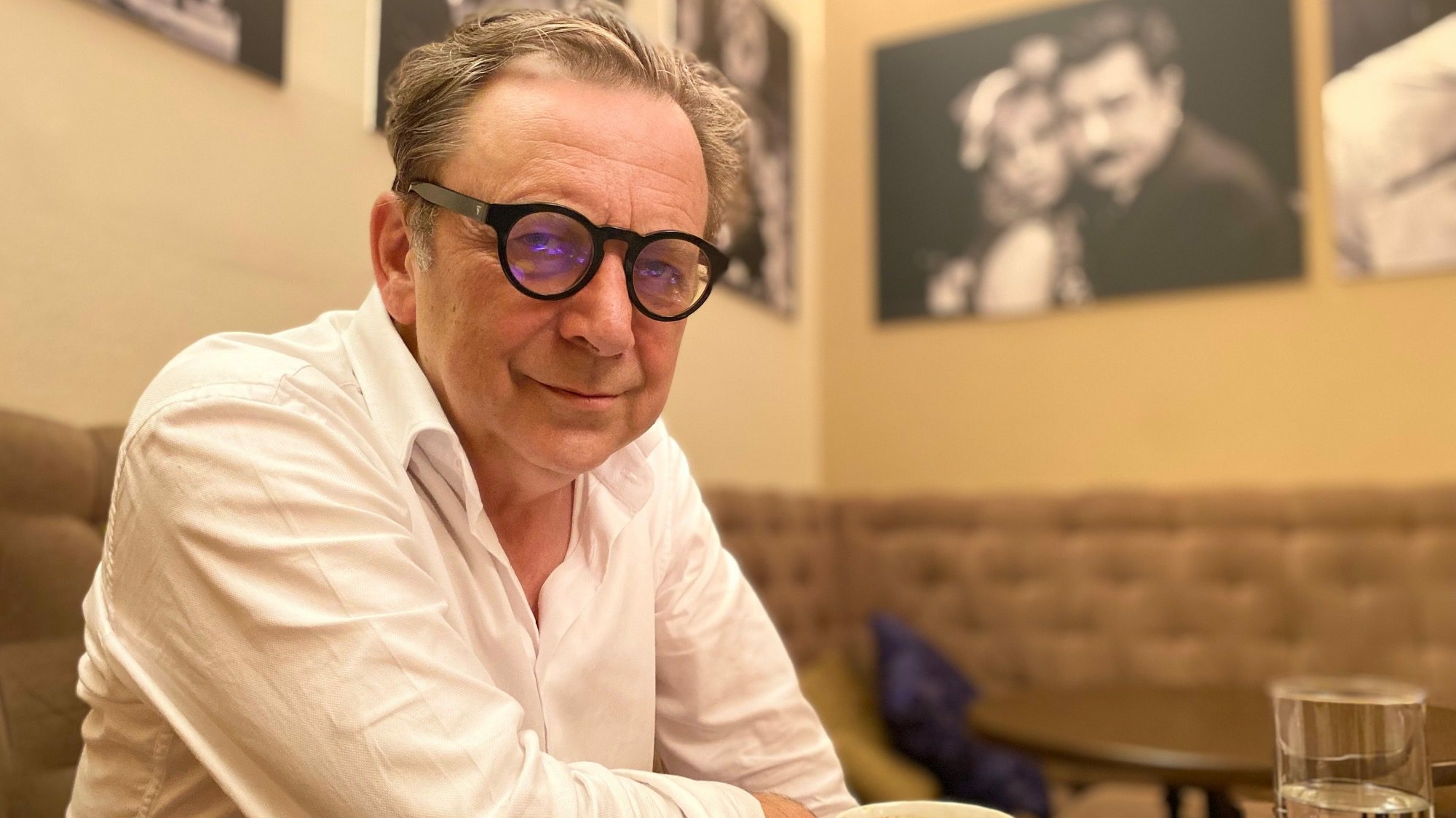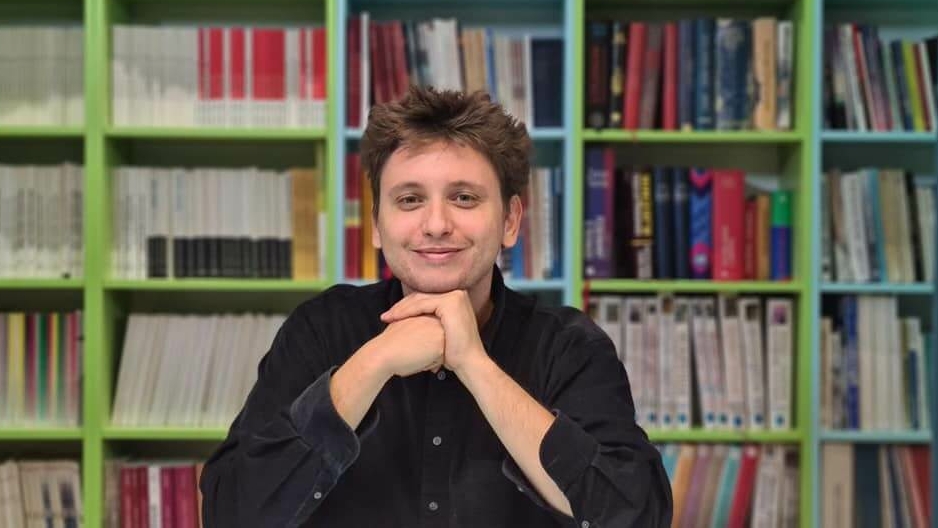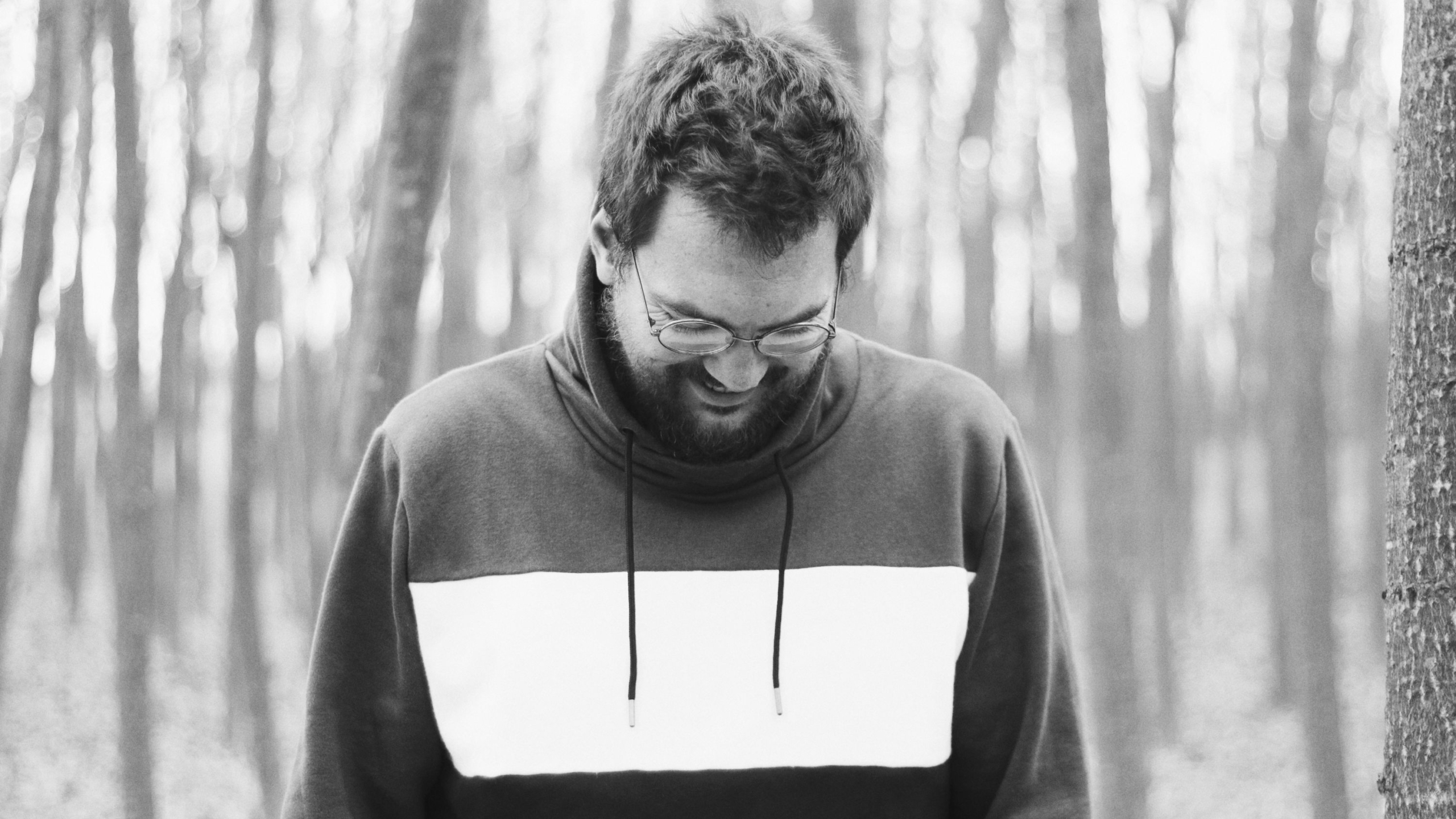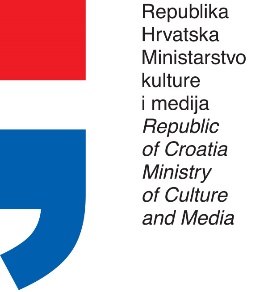Eminent sculptor Petar Hranuelli creates and exhibits his art throughout central and southern Europe. He is especially active in the Balkan region, and he selflessly shares and leaves his work, dedication and life philosophy in places where his sculptures leave a mark and a path made of the stone dust of Brač, Prilep, Lika, Aranđelovac, Medvedica and Sićevo. He talks to P-portal about essence, honesty, dedication, change, balance and beauty.
Seeing the places you visit, where you create and exhibit, the cheerfulness and positivity you carry in you, the people you socialize with, one gets the impression that you feel at home everywhere, that there are no borders between our small republics for you?
Well observed. I do feel at home everywhere. Borders don’t exist, or they exist only in our heads. I realized that long ago. Similar people always find each other; similar minds think alike. Art is in complete opposition to borders and limitations.
You often say that you love what you do and that you play in that work, and so create. How much of the unconscious in yourself have you become aware of? And how does it feel to become aware of something you carry in yourself, even for a moment?
Probably more than I am aware of. Art for me really is play, playfulness, constant searching and seeking. Just as I use archetypal motifs, so I search for the archetypal in me. You must be honest with yourself; you must have the desire and courage to face yourself even if you sometimes don’t like what you find. Throughout our lives, we are all on the journey of knowing ourselves, illuminating parts of our being, whatever it is that we do. It is very important to be honest with yourself in this process. In art, it can be seen in the work itself; the audience recognizes this honest approach. There are artists whose technique is very good, excellent, but if there is no honesty in the work, it simply shows.
For dialogue with oneself
Stone, woman, wind, nature, love, work. All permanent and enduring, is it all a person needs?
We are all different; everyone needs something different. What is good for someone else may not be good for me and vice versa. I don’t like giving advice, telling people what to do and how to live. There is no universal recipe. It would be easy if there was one – there wouldn’t be so many unhappy and dissatisfied people. And again, we come back to this honesty I talked about. The oracle at Delphi was inscribed with “Know yourself”. There, that would be the “recipe” – engage in a dialogue with yourself, find time for yourself, explore who you are and live according to that provided you don’t encroach on others. It sounds simple, but simplicity is hardest to achieve.
What values do you stand behind? What is unquestionable for you in your life and work?
I believe there are universal values according to which we should live. Even though we live in a time of the breakdown of certain values, I deeply believe it is a temporary state our society is in. I know it sounds like a commonplace, but I believe that beauty, goodness, mutual respect, honesty, love, courage, honor, friendship and peace are values we should aspire to in our relationship with ourselves and others.
What artists and authors have been your role models? Whose work do you admire?
Henry Moore and Picasso have been my greatest inspiration. Some of my works are homages to them, and I often return to them. I especially admire the work of Dušan Džamonja, Vojin Bakić, Olga Jevrić, Miodrag Živković, Radeta Stanković…
You mentioned in an interview that it is difficult for artists today because, apart from creating the work, they also have to be managers, traders and knowledgeable about at least the basics of marketing. Then again, the end of the 20th and the beginning of the 21st century have brought some new tools and possibilities for the promotion of art. You are active on social networks, your website is up-to-date and well managed, you have a good relationship with the media – in short, you use modern digital tools and new means of communication. In addition to these, what new skills should an artist of our time have?
You have practically said it all. Unfortunately, there are no professional managers in our business in our region. It would be ideal if artists focused only on their art and didn’t have to think about the presentation and placement on the market. But, since that is not the case, we should use all the possibilities brought by technological advancement. I am very disciplined about this – I get up very early, make a plan while drinking my morning coffee, update my website, prepare social media posts and only then go down to my studio. Since I am from Brač, I am used to appreciating and practicing the fjaka. After the fjaka, I always find time to visit colleagues’ exhibitions, spend time with fans of my art, answer questions from the media. It has to be done; there is no other way. The artist must live in tune with the times, regardless of the themes and motifs he deals with. It all requires a lot of energy, but, fortunately, I have no lack of it.
What lies ahead for sculpture in the coming decades? What is your opinion of NFTs (a type of cryptocurrency that enables artworks to be turned into digital “tokens” at various websites and media and sold through digital commerce)?
I don’t have a lot of experience with that, but again, as I’ve said, an artist has to take into account the context in which he creates. If cryptocurrencies really are the future, as many claim, I don’t see why artworks shouldn’t be traded in this way. We should always be open to new things and learn from those older and younger than us.
The world today praises Yugoslav architecture
The commemorative architecture of Yugoslavia has mostly received the attention of the international public in recent years. How do you see this great legacy? What is our relationship with it like?
I view it with pride and great respect. The fact is that the international public has shown more interest in it than we have. It is also a fact that the most serious exhibition of the commemorative architecture of Yugoslavia did not take place here but in the great Museum of Modern Art. I think we need more time to pass to be able to objectively evaluate this very important period in Yugoslav architecture and art. It’s no wonder, then, that other observers noted the importance of what was happening in postwar Yugoslavia before we did. I think that the works of modern architecture, which truly represented a leap forward and progressive thinking compared to everything that came before it, are not explored enough. Again, we have to understand the context which led to these hybrid solutions never seen before in world architecture. This architecture had to affirm different cultures in a multicultural state and satisfy demands for rapid modernization and economic development. Yugoslav architects of the time offered solutions the world praises today. I believe that our future generations will pay special attention to this important period and that important evaluations of it are yet to come.
You don’t seem too bothered by political situations – you seem to always concentrate on art, work and creation, and that confirms that art knows no boundaries but brings closer and connects.
I notice them, but I don’t allow them to affect me. I am aware that almost everything today is political in some way, but it would not be good for me if I let myself think too much about it. I travel a lot and talk to people, and, although it sometimes seems we are different, we all actually deal with the same difficulties today. There are no boundaries even in that sense – forms are different, but the essence is the same. This is where my dedication to art and beauty comes from.
In Serbia and in the region, there has been a lot of talk about the health of artists in the past month, so I will ask you to finish the sentence the way you see fit: ______ in corpore sano.
Mens sana in corpore sano. I believe that a healthy body houses a healthy spirit. If I am not physically active for a while, I feel really unwell, and only work helps me. The Serbian representative at Eurovision points to various anomalies of contemporary society, including this preoccupation with appearances at the expense of the neglected spirit. For me, the key is in the balance between the spirit and the body and in the constant care for both.
What are you working on right now, and where and when can we see your exhibitions?
I am currently preparing for a solo exhibition at the Museum of Herzegovina in Trebinje. It is set to open on 1 June 2022. I will present my drawings and sculptures created since 2018. I am looking forward to returning to Trebinje and meeting the audience there. I invite you, too, to visit the exhibition. Welcome!
Translation from Croatian: Jelena Šimpraga
